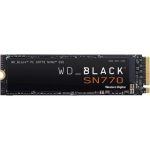The celestial body called 29P/Schwassmann-Wachmann 1, previously classified as a comet and for some time considered a centaur, has astronomers baffled by its behavior.
Centaurs are minor bodies in our solar system that are unusual because they look like both asteroids and comets. The centaurs, which orbit between Jupiter and Neptune, were named in reference to the mythical creature, half human and half horse, called a centaur, due to the dual nature of these stars.
Centaurs are ancient trans-Neptunian objects that have drifted closer to the Sun than Neptune’s orbit due to subtle gravitational influences from the planets over the past few million years, and may eventually become short-period comets. They are hybrids in the sense that they are in a transition phase of their orbital evolution: many share characteristics both with trans-Neptunian objects (from the cold deposit of the Kuiper Belt) and with short-period comets, which are very altered by repeated approaches to the Sun up to fairly short distances.
Using observations made by the James Webb Space Telescope of NASA, ESA and CSA, respectively the US, European and Canadian space agencies, scientists have investigated the unusual jets of volatile gases emerging from 29P/Schwassmann-Wachmann 1 (29P for short). The team is led by Sara Faggi, from NASA.
This centaur is known for its almost periodic jetting. Its intensity varies every six to eight weeks, making it one of the most active objects in the outermost region of the solar system.
Data from previous radio wavelength observations of Centaur 29P showed a jet pointing generally toward the Sun (and Earth) rich in carbon monoxide (CO). The James Webb Space Telescope detected this jet directed toward the Sun and, thanks to its large mirror and infrared capabilities, was also able to track the presence of many other chemicals, such as water (H2O) and carbon dioxide (CO2). The latter is one of the main ways carbon is stored in the solar system. No sign of water vapor was detected in the very tenuous atmosphere of 29P, which could be related to the extremely cold temperatures present in this body.
The spectral and imaging data provided by Webb revealed features never seen before: two jets of carbon dioxide emanating in a north and south direction, and another jet of carbon monoxide pointing north.
Artist’s recreation of Centaur 29P/Schwassmann-Wachmann 1 emitting gas jets, seen from the side. (Image: NASA/ESA/CSA/L. Hustak/STScI)
Using the data collected by Webb, the research team created a three-dimensional model of the jets to try to deduce their origin. Through their modeling efforts, they discovered that the jets were emitted from different regions of the centaur’s core. The angles of the jets suggest the possibility that the core is a collection of distinct objects with different compositions; However, other hypotheses cannot yet be excluded.
The study is titled “Heterogeneous outgassing regions identified on active centaur 29P/Schwassmann–Wachmann 1”. And it has been published in the academic journal Nature. (Fountain: NCYT by Amazings)





![[Img #74692]](https://thelatestnews.world/wp-content/uploads/2024/12/What-do-11-and-12-year-old-boys-and-girls-150x150.jpg)



![[Img #74019]](https://thelatestnews.world/wp-content/uploads/2024/10/Strange-gas-emissions-from-an-asteroid-comet-hybrid.jpg)
![[Img #74692]](https://thelatestnews.world/wp-content/uploads/2024/12/What-do-11-and-12-year-old-boys-and-girls-300x200.jpg)


Add Comment